Weekly Current Affairs (22nd September 2025 to 28th September 2025) | Weekly Current Affairs - UPSC PDF Download
GS3/Environment
Cold Desert Biosphere Reserve – UNESCO Recognition
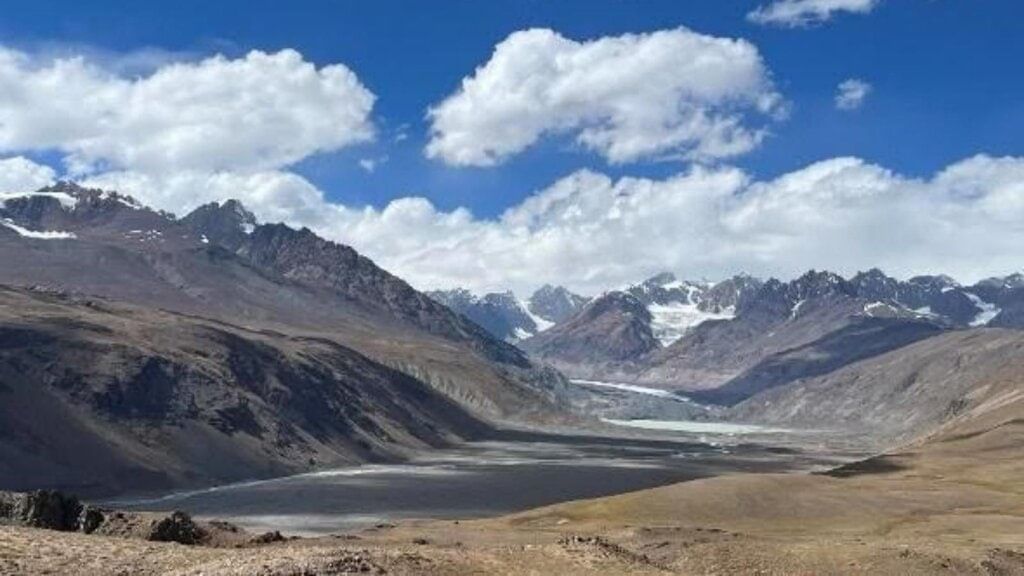 Why in News?
Why in News?
The Cold Desert Biosphere Reserve, located in Himachal Pradesh, has recently been designated as part of UNESCO's World Network of Biosphere Reserves (WNBR). This recognition marks India’s 13th biosphere reserve to be included in the global list, acknowledging the ecological and cultural significance of this fragile Trans-Himalayan ecosystem.
Key Takeaways
- India's Cold Desert Biosphere Reserve spans 7,770 sq. km in the Lahaul-Spiti district.
- This designation underscores the importance of biodiversity protection and sustainable development in the region.
- UNESCO's recognition aligns with global efforts to safeguard vulnerable ecosystems facing climate change and tourism pressures.
Additional Details
- Geographical Spread: The reserve covers various landscapes, including windswept plateaus, glacial valleys, alpine lakes, and high-altitude deserts, situated at altitudes ranging from 3,300 to 6,600 meters.
- Biodiversity: The area is home to 732 vascular plant species, including 30 endemics and 47 medicinal herbs used in traditional healing practices. Notable fauna includes the snow leopard, Himalayan ibex, and several bird species like the golden eagle.
- The reserve is inhabited by around 12,000 residents who engage in traditional pastoralism, yak herding, and small-scale farming.
- The community maintains ancient Tibetan herbal medicine practices, influenced by local Buddhist monasteries.
This UNESCO designation not only elevates the Cold Desert to international prominence but also emphasizes the need for cooperation in conservation efforts, eco-tourism, and climate research. The recognition signals a commitment to integrating ecological preservation with community development, showcasing India's rich cultural and biological heritage.
GS3/Economy
Centre to Simplify Quality Control Order (QCO) Framework
 Why in News?
Why in News?
A panel from NITI Aayog has recommended the simplification of India's Quality Control Orders (QCOs) to ease certification, assessments, and inspections. This move aims to support Micro, Small, and Medium Enterprises (MSMEs) amidst both domestic and international criticisms.
Key Takeaways
- QCOs are mandatory under the Bureau of Indian Standards (BIS) Act, 2016, making specific Indian Standards compulsory for certain products.
- Manufacturers and importers must obtain a BIS license or Certificate of Conformity before proceeding with production or sales under QCOs.
Additional Details
- Standard Mark: Products that fall under QCOs must display the ISI mark (or Hallmark for jewellery) to signify compliance with standards.
- Legal Backing: QCOs are regulated by the BIS (Conformity Assessment) Regulations, 2018, violations can lead to fines or imprisonment.
- Import Regulations: The Foreign Manufacturers Certification Scheme (FMCS) mandates compliance from foreign manufacturers as well.
- Coverage: Out of approximately 23,000 BIS standards, only 187 QCOs apply to 770 products, with 84 QCOs issued in the last three years.
- Example: The introduction of QCOs for compressors and air conditioners (ACs) in 2023 significantly increased production from less than 2 million units in 2021-22 to over 8 million units in 2023-24 for compressors, and to over 12 million units for ACs.
Challenges Related to QCOs
- High Costs: The certification process is costly due to inspections and documentation requirements, which can burden MSMEs.
- Non-Tariff Barrier Issues: Countries like the US, EU, UK, and New Zealand argue that India's QCOs surpass global standards, with the USTR noting that BIS marks are required even for chemicals, necessitating site visits.
- Industry Pushback: MSMEs are concerned about inflationary costs and restrictions on imports of cheaper raw materials and components.
- Limited Enforcement: Only 187 out of 23,000 standards are currently enforced, primarily in steel, electronics, and chemicals.
- Implementation Delays: The slow approval process for licenses disrupts production and supply chains.
- Conflicting Views: While some MSMEs, like Birla Aircon, have reported increased turnover due to QCOs, others view them as unnecessary interventions.
Steps Taken by Government
- Digitisation: Certification procedures have been simplified for over 750 products, with licenses granted within 30 days.
- MSME Outreach: Initiatives like Jan Sunwai facilitate open online discussions thrice weekly.
- Manak Manthan: This BIS initiative supports MSMEs by addressing their concerns in the field.
- Regional Conferences: Conducted by the Department of Consumer Affairs to address and resolve issues faced by MSMEs.
- Capacity Building: Approximately 40,000 out of 50,753 BIS certifications have been awarded to MSMEs, with a significant number voluntarily obtained for credibility and export purposes.
- Trade Readiness: The government positions QCOs as essential for enhancing quality and global competitiveness.
- WTO Consistency: QCOs can be justified if they are aligned with health, safety, environmental, or security standards, in accordance with the WTO Technical Barriers to Trade (TBT) Agreement.
Sample Question
With reference to the Quality Council of India (QCI), consider the following statements:
- 1. QCI was set up jointly by the Government of India and the Indian Industry.
- 2. The Chairman of QCI is appointed by the Prime Minister on the recommendations of the industry to the Government.
Which of the above statements is/are correct?
- (a) 1 only
- (b) 2 only
- (c) Both 1 and 2*
- (d) Neither 1 nor 2
This structured overview provides insights into the QCO framework, the challenges it presents, and the government's efforts to address these issues while enhancing support for MSMEs.
GS2/International Relations
China’s WTO Concession and Implications for India
Why in News?
China has announced at the UN General Assembly that it will no longer pursue Special and Differential Treatment (SDT) in future World Trade Organization (WTO) negotiations. This marks a significant shift in global trade dynamics and arises in the context of increasing US tariff pressures and criticism regarding the exploitation of SDT provisions. This development has direct implications for India, which heavily relies on SDT flexibilities to protect its agricultural and social welfare priorities.
Key Takeaways
- China's decision is a tactical retreat while preserving its developing country status.
- India's reliance on SDT is critical for safeguarding its agricultural interests and vulnerable populations.
- The shift could impact India's agricultural subsidies and food security measures.
Additional Details
- Special and Differential Treatment (SDT): These are provisions in WTO agreements that provide developing countries and Least Developed Countries (LDCs) with special rights and favorable treatment in trade negotiations. This includes longer implementation periods and preferential market access to help them participate effectively in global trade.
- Impact of China's Decision: While China’s move has been hailed as a reform by the WTO, many view it as a way to deflect criticism without relinquishing its agricultural and industrial advantages.
- External Pressures on India: With the US imposing tariffs on various goods, there are growing calls for India to abandon its developing country status, which it has relied upon for higher tariffs and compliance flexibilities.
- Agricultural Importance: Agriculture is crucial for India, employing around half of its workforce and ensuring food security for 1.4 billion citizens. India utilizes exemptions to subsidize low-income farmers, which is at risk due to potential phased reductions in subsidies.
- Global Hypocrisy: Developed nations have provided substantial subsidies to their own agricultural sectors, while criticizing India's support mechanisms, highlighting a disparity in global trade practices.
- Strategic Options for India: India needs to lead initiatives like the G33 coalition to protect its agricultural interests while also engaging in e-commerce talks and reforming its SDT framework to maintain essential protections.
In conclusion, while India faces increasing pressure to reduce its dependence on SDT, its demographic and developmental challenges necessitate a cautious approach. A well-calibrated strategy can ensure food security and enhance global competitiveness. By proactively engaging in WTO reforms, India can position itself as a key player in balancing growth and equity in international trade.
GS1/History & Culture
Konkan Geoglyphs: Ancient Artistry on the Coast
Why in News?
The prehistoric geoglyphs located along the Konkan coast are believed to be as old as 24,000 years, according to recent stratigraphic findings from the Koloshi caves in Maharashtra.
Key Takeaways
- Geoglyphs are rock engravings found on laterite plateaus in Maharashtra, Goa, and southern Karnataka.
- The carvings depict a variety of subjects, including humans, animals, and abstract designs.
Additional Details
- About Konkan Geoglyphs: These are prehistoric rock engravings known as geoglyphs or petroglyphs, characterized by their intricate designs.
- Depictions: The engravings include representations of humans, animals such as elephants, tigers, rhinos, stingrays, turtles, and peacocks, as well as abstract motifs.
- Technique: The geoglyphs were created using methods like scooping, etching, and pecking into the laterite rock, resulting in grooves that are 3 to 5 cm deep and 3 to 4 cm wide.
- Unique Feature: Unlike painted caves (for example, Bhimbetka), these geoglyphs are open-air, making them quite rare in India.
- Cultural Value: They provide significant insights into prehistoric ecology, rituals, and the evolution from hunter-gatherer societies to agrarian communities.
Important Sites
- Maharashtra (Ratnagiri–Sindhudurg): Ratnagiri alone is home to over 1,500 carvings spread across 210 square kilometers.
- Kasheli: Features a giant elephant carving (13x18 m) and over 125 depictions of sharks, stingrays, and tigers.
- Barsu: Displays a human figure flanked by two tigers, resembling Harappan seals. Local protests are ongoing against a proposed oil refinery that threatens this site.
- Rundhye Tali: Known for its concentric circles and abstract motifs, including outlines of jellyfish and tigers.
- Devache Gothane: Features a standing human figure, linked to a magnetic deflection anomaly.
- Devi Hasol: Displays a snake-like square design (8 m) that is still involved in rituals at the Aryadurga temple.
- Jambharun, Ukshi, Kudopi: Known for their faunal and abstract petroglyphs.
- Usgalimal (Phansaymal): Contains carvings of bulls, deer, spirals, and cup marks, along with grinding grooves.
History and Antiquity
- Dating: While traditionally estimated to be around 10,000 years old, new excavations suggest that the origins of these carvings may extend back to approximately 38,000 years.
- Continuity: The practice of geoglyph-making appears to have continued into the early historic period, illustrating an evolution in ritual and symbolism.
- Ecological Record: The carvings depict species that are now extinct in the Konkan region, such as rhinoceroses and hippopotamuses, indicating the area's Pleistocene fauna.
World Context
- When compared with global geoglyphs like the Nazca Lines in Peru, the Atacama Giant in Chile, and the Blythe Intaglios in the US, the Konkan geoglyphs are notably smaller but exhibit greater intricacy and ecological detail.
UNESCO Status
- The Konkan geoglyphs are listed on India's Tentative List for UNESCO heritage status (2022), with a nomination being prepared for the 2027-28 cycle.
In summary, the Konkan geoglyphs represent a significant aspect of India’s prehistoric cultural heritage, offering insights into ancient societies and their environments.
Consider the following properties included in the World Heritage List released by UNESCO:
- 1. Shantiniketan
- 2. Rani-ki-Vav
- 3. Sacred Ensembles of the Hoysalas
- 4. Mahabodhi Temple Complex at Bodhgaya
How many of the above properties were included in 2023?
- (a) Only one
- (b) Only two*
- (c) Only three
- (d) All four
GS3/Economy
Insolvency and Bankruptcy Code (IBC) - SC Clears JSW Steel’s Acquisition of BPSL
 Why in News?
Why in News?
The Supreme Court of India has approved JSW Steel’s acquisition of Bhushan Power and Steel (BPSL) for $2.3 billion (₹19,350 crore), reversing a previous decision that favored liquidation. This judgment reinforces the provisions of the Insolvency and Bankruptcy Code (IBC), 2016, emphasizing the importance of reviving distressed firms over liquidation.
Key Takeaways
- The Supreme Court's ruling prioritizes corporate revival.
- The IBC aims to consolidate insolvency processes into a unified framework.
- JSW Steel's acquisition is significant for both companies involved.
Additional Details
- Insolvency vs Bankruptcy: Insolvency refers to the inability to pay debts due to insufficient assets, whereas bankruptcy involves a legal declaration of insolvency.
- About the IBC 2016: The IBC is India's bankruptcy law designed to streamline insolvency processes and protect small investors, creating a more efficient resolution framework.
- Insolvency and Bankruptcy Board of India (IBBI): Established on October 1, 2016, the IBBI oversees insolvency proceedings and regulates related professionals in India.
The ruling by the Supreme Court represents a significant shift in the approach to corporate insolvency in India, reinforcing the spirit of the IBC by favoring rehabilitation over liquidation. This decision is expected to enhance investor confidence in the insolvency framework and reduce litigation uncertainties.
GS3/Economy
The Growing Relevance of Traditional Medicine
 Why in News?
Why in News?
The significance of traditional medicine has surged as it remains a primary health-care system for billions worldwide, particularly in low- and middle-income countries. According to the World Health Organisation (WHO), it is practiced in 170 of its 194 member states, covering 88% of the global population.
Key Takeaways
- Traditional medicine plays a vital role in health care, especially in regions with limited access to modern healthcare.
- It contributes to biodiversity conservation, nutritional security, and sustainable livelihoods.
- The global market for traditional medicine is projected to reach $583 billion by 2025.
Additional Details
- Global Expansion: The traditional medicine sector is projected to grow at an annual rate of 10%–20%. China leads with a $122.4 billion traditional Chinese medicine industry, followed by India’s AYUSH sector valued at $43.4 billion.
- India's Ayurvedic Transformation: India has become a leader in promoting traditional medicine, particularly Ayurveda, with the AYUSH sector comprising over 92,000 enterprises and significant revenue growth.
- Public acceptance of AYUSH systems is high, with awareness levels at 95% in rural areas and 96% in urban centers.
- Scientific Validation: India has invested in institutions focused on clinical validation and integrative care models to bridge traditional and modern medicine.
- International collaborations have expanded, with India signing 25 bilateral agreements and establishing AYUSH information cells in 39 countries.
- WHO Global Traditional Medicine Centre: This center aims to integrate traditional practices with modern technologies like AI and big data.
In conclusion, traditional medicine is witnessing a renaissance driven by demand for preventive and sustainable health systems. India's Ayurvedic transformation exemplifies how traditional knowledge can be revitalized through scientific validation and international cooperation, thereby enhancing its role in global health.
GS2/International Relations
US Withdrawal from Multilateralism: Risks and Opportunities for India
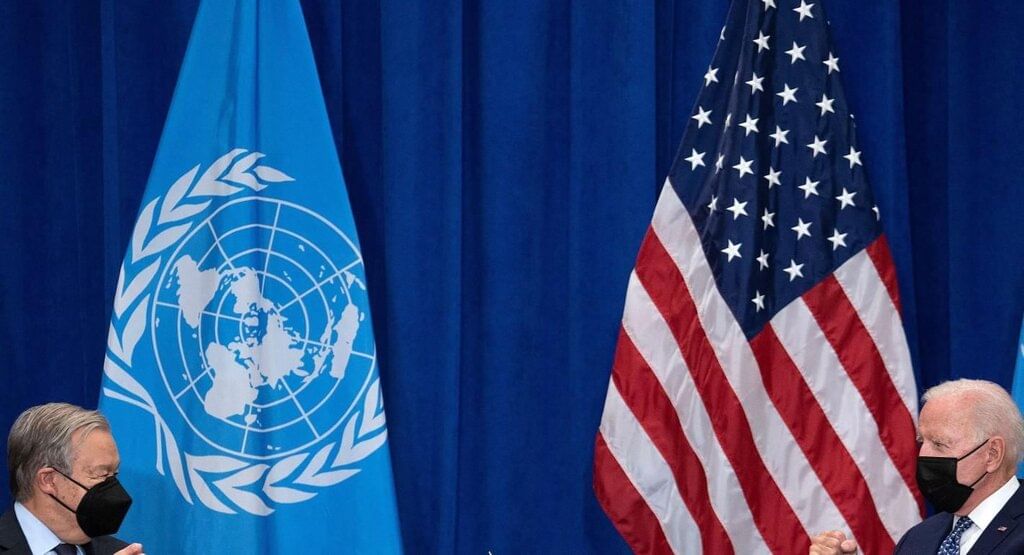 Why in News?
Why in News?
The United Nations (UN), established in 1945 to uphold a rules-based global order, is facing significant challenges today. The US withdrawal from multilateral engagements under President Donald Trump has weakened the UN, financially and structurally, creating a vacuum that China is increasingly filling. For India, this situation presents both risks and opportunities to redefine multilateralism.
Key Takeaways
- Trump's administration has shifted towards unilateralism, impacting international relations.
- The UN has suffered from severe funding cuts and institutional withdrawals, particularly from the US.
- China is expanding its influence in global governance, potentially filling the void left by the US.
- India has the chance to step up its role in international affairs and multilateralism.
Additional Details
- America First Doctrine: Trump has emphasized sovereignty over global cooperation, rejecting supra-nationalism in favor of unilateral actions.
- Funding Cuts: US contributions to the UN have been drastically reduced, crippling its operational capacity and leading to withdrawals from organizations like WHO and UNESCO.
- China's Role: China has strategically placed its nationals in key UN positions, promoting initiatives tied to the Belt and Road Initiative, and contributing significantly to UN funding.
- India's Financial Contribution: India currently contributes only $38 million (less than 1%) to the UN, which is significantly lower than other major economies like the US and China.
- Strategic Focus for India: India should prioritize AI governance, form North-South coalitions, and advocate for UN reforms to enhance efficiency rather than pursuing outdated demands like UNSC expansion.
In conclusion, as the UN turns 80, it remains vulnerable due to the US's retreat and China's ambitions. The current geopolitical landscape offers India a unique opportunity to assume greater responsibility in shaping a new multilateral framework that can address contemporary global challenges.
GS2/Governance
Central Consumer Protection Authority (CCPA) Governance
Why in News?
The Central Consumer Protection Authority (CCPA) has recently imposed a penalty of ₹2,00,000 on FirstCry for making false and misleading price representations on its e-commerce platform.
Key Takeaways
- The penalty was a result of complaints regarding misleading price displays.
- Products were advertised with the statement “MRP inclusive of all taxes,” yet additional GST was charged at checkout.
- This led to consumers being misled about the actual discounts they were receiving.
Additional Details
- Complaint: The e-commerce platform displayed a product claiming a 27% discount, but after including GST, the effective discount was only 18.2%, which constituted misleading advertisements as per Section 2(28) and unfair trade practices under Section 2(47).
- Dark Pattern: The practice was categorized as “drip pricing,” which falls under the Guidelines for Prevention and Regulation of Dark Patterns, 2023.
- Violation of E-Commerce Rules: FirstCry contravened Rule 7(1)(e) of the Consumer Protection (E-Commerce) Rules, 2020, which requires the total price, including all charges and taxes, to be displayed clearly upfront.
The CCPA was established under Section 10 of the Consumer Protection Act, 2019, which became effective on July 20, 2020. It is overseen by the Ministry of Consumer Affairs, Food & Public Distribution and is responsible for protecting consumer rights, initiating class-action suits, and investigating unfair practices. The CCPA is composed of a Chief Commissioner and two Commissioners, one focusing on goods-related issues and the other on services-related complaints.
Additionally, consider the following organizations in India:
- The National Commission for Backward Classes
- The National Human Rights Commission
- The National Law Commission
- The National Consumer Disputes Redressal Commission
Question: How many of the above are constitutional bodies?
- (a) Only one
- (b) Only two
- (c) Only three
- (d) All four
GS2/International Relations
Forum for India-Pacific Islands Cooperation (FIPIC)-III Summit
 Why in News?
Why in News?
India recently hosted a significant meeting of foreign ministers from the Forum for India-Pacific Islands Cooperation (FIPIC) in New York, highlighting its commitment to strengthening ties with Pacific Island nations.
Key Takeaways
- The FIPIC was established in 2014 during Prime Minister Narendra Modi's visit to Fiji as part of India's Act East Policy.
- It includes 14 Pacific Island Countries (PICs), aimed at enhancing cooperation across various sectors.
Additional Details
- Members: The forum comprises the following countries: Cook Islands, Fiji, Kiribati, Marshall Islands, Micronesia, Nauru, Niue, Palau, Papua New Guinea, Samoa, Solomon Islands, Tonga, Tuvalu, and Vanuatu.
- Objectives: The primary goals include fostering collaboration in trade, investment, health, agriculture, renewable energy, disaster management, digital connectivity, and climate change adaptation.
- Summits Held:The following summits have taken place:
- Suva (2014)
- Jaipur (2015)
- Port Moresby (2023)
- Key Initiatives: Initiatives include a $1 million climate fund, the establishment of a Pan-Pacific Islands e-network, visa-on-arrival policies, and cooperation in space technology and diplomatic training.
- Trade: The current bilateral trade with PICs stands at approximately $300 million annually, with exports valued at $200 million and imports at $100 million.
The strategic importance of FIPIC is multifaceted, enhancing India’s role in maritime governance, countering China’s influence, leveraging maritime resources through the control of extensive Exclusive Economic Zones (EEZs), and reinforcing climate diplomacy with vulnerable PICs. Additionally, it positions India favorably in global forums where PICs often vote as a bloc, thereby increasing India's diplomatic weight.
GS3/Environment
Pollution in Indian Rivers: CPCB Report, 2023
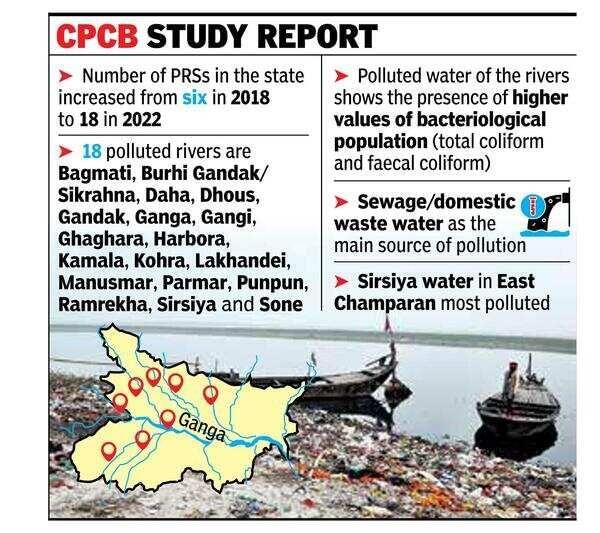 Why in the News?
Why in the News?
The Central Pollution Control Board (CPCB) has recently published its assessment for the years 2022–2023 regarding the health of rivers in India, highlighting critical issues surrounding river pollution.
Key Takeaways
- The CPCB assessment reveals a marginal decline in unfit bathing locations, from 815 in 2022 to 807 in 2023.
- A total of 296 polluted river stretches were identified across 271 rivers, down from 311 stretches in 279 rivers the previous year.
Additional Details
- About Central Pollution Control Board (CPCB):
- Established as a statutory body in September 1974 under the Water (Prevention and Control of Pollution) Act, 1974.
- Later expanded its mandate to include powers under the Air (Prevention and Control of Pollution) Act, 1981.
- Acts as the technical arm of the Ministry of Environment, Forest & Climate Change (MoEFCC).
- Principal Functions:
- Water pollution control: Aims to promote cleanliness in streams and wells by preventing and controlling pollution.
- Data Management: Collects and disseminates technical and statistical data on air and water pollution.
- Biological Oxygen Demand (BOD):
- Defines the amount of dissolved oxygen required by microbes to decompose organic matter.
- Healthy rivers have a BOD of less than 3 mg/L, whereas rivers with BOD greater than 3 mg/L are considered unfit for bathing.
In summary, the CPCB's findings emphasize the ongoing challenges of pollution in Indian rivers and the need for continued efforts to improve water quality across the nation.
GS2/ Indian Economy
WTO Agreement on Fisheries Subsidies
Why is it news?
- India is ratifying the WTO Agreement on Fisheries Subsidies, showcasing its commitment to sustainable fishing and protecting small-scale fishers.
- This move aligns with global efforts to reduce harmful subsidies that contribute to overfishing and threaten marine biodiversity.
What is the WTO Agreement on Fisheries Subsidies?
- It is a binding multilateral agreement aimed at promoting environmental sustainability and fair trade in global fisheries.
- The agreement focuses on ocean governance and protecting marine resources and was adopted at WTO's 12th Ministerial Conference in 2022.
Key Objectives
- Prohibit harmful subsidies: The agreement aims to ban subsidies that lead to overfishing, overcapacity, and depletion of fish stocks.
- Protect livelihoods: Safeguarding the livelihoods of millions who depend on fisheries for nutrition and income is a crucial objective.
- Ensure fair competition: The agreement seeks to create a level playing field by regulating subsidies that distort competition.
Key Features
- Subsidy Prohibitions: Government support for illegal, unreported, and unregulated (IUU) fishing, fishing of overfished stocks, and fishing on unregulated high seas is prohibited.
- Transparency Mechanism: WTO members are required to notify their subsidies and fishing activities for monitoring purposes.
- Implementation Support: The WTO Fish Fund was established to assist developing countries and Least Developed Countries (LDCs) with technical support and funding.
- Committee on Fisheries Subsidies: This committee provides a platform for regular dialogue, compliance review, and technical assistance related to fisheries subsidies.
India's Stance on the WTO Agreement
Protection for Small Fishers: India advocates for policy space and exemptions to protect the livelihoods of small-scale and artisanal fishers.
- It calls for Special and Differential Treatment (S&DT), proposing a 25-year transition period for developing countries and LDCs, compared to the 5-7 years suggested by developed nations.
Per Capita Subsidy Basis: India suggests that subsidy disciplines be calculated per fisher rather than on total subsidy amounts.
- This highlights the disparity between high subsidies in developed countries (e.g., USD 76,000 per fisher) and low subsidies in India (e.g., USD 35 per fisher).
Stricter Rules for Historical Subsidizers: India calls for stricter regulations targeting countries with a history of high subsidies contributing to overfishing.
- It aims to protect nations with low-impact fisheries from such rules.
Sustainability Focus: India emphasizes that the agreement should not penalize nations working towards sustainable fishing practices.
- It advocates for support of long-term marine conservation efforts.
Initiatives and Schemes for Sustainable Fisheries in India
1. Blue Revolution Scheme (2015-16):
- Aim: To enhance fish production and productivity through the development of aquaculture and marine fisheries.
2. Pradhan Mantri Matsya Sampada Yojana (PMMSY, 2020):
- Objective: To transform the fisheries sector by increasing productivity, generating employment, and promoting sustainable fishing practices.
3. Fisheries and Aquaculture Infrastructure Development Fund (FIDF, 2018-19):
- Purpose: To provide financial assistance for the development of infrastructure in marine and inland fisheries.
4. National Policy on Marine Fisheries (NPMF, 2017):
- Goal: To ensure the sustainable management of marine resources and the conservation of fish stocks.
5. State-Specific Marine Fishing Regulation Acts (MFRA):
- Example: States like Maharashtra and Kerala have implemented regulations governing fishing in India’s Exclusive Economic Zone, including fishing bans and the prohibition of destructive fishing practices.
6. ICAR-Central Institute of Fisheries Education (CIFE):
- Role: To provide education and conduct research on sustainable fish farming and aquaculture practices.
GS3/Science and Technology
Delhi to Witness Artificial Rain through Cloud Seeding
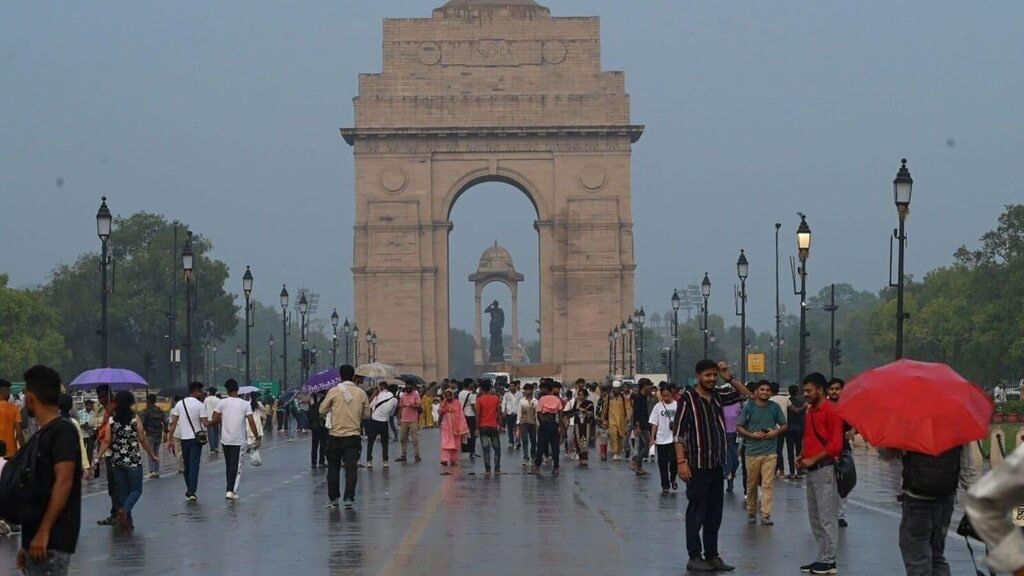 Why in News?
Why in News?
The Delhi government is preparing to conduct trials of cloud seeding as a method to trigger artificial rain. This initiative aims to alleviate air pollution in the city as winter approaches.
Key Takeaways
- Cloud seeding is a technique used to modify precipitation patterns.
- The method aims to improve air quality by inducing rainfall.
Additional Details
- About Cloud Seeding: Cloud seeding is a microclimate management technique that alters precipitation patterns by dispersing substances into clouds, thus stimulating rainfall or snowfall.
- Reasons for Use: It is implemented to mitigate hail, disperse fog, and induce or prevent precipitation. This can help manage weather-related issues effectively.
- Techniques:
- Static Cloud Seeding: Chemicals are introduced into cold clouds with supercooled water droplets, promoting the formation of ice crystals.
- Hygroscopic Cloud Seeding: Salts are sprayed into warm clouds, acting as condensation nuclei to increase the size and number of water droplets.
- Dynamic Cloud Seeding: This method enhances vertical air currents to improve moisture transfer through clouds, leading to increased rainfall.
- Common Chemicals Used in Cloud Seeding:
- Silver iodide (AgI): Preferred for its crystalline properties similar to ice.
- Potassium iodide (KI): Functions similarly to silver iodide.
- Dry ice (solid CO2): Used to quickly cool cloud droplets to aid in rain formation.
- Liquid propane: Applied in specific cloud types and is effective at higher temperatures.
- Sodium chloride and calcium chloride: Used in hygroscopic cloud seeding methods.
- Bismuth tri-iodide (BiI3): Sometimes utilized based on experimental or environmental considerations.
- Dispersion Methods: These range from aircraft and ground-based generators to modern techniques like drones delivering electric charges and infrared laser pulses.
- Limitations: There are concerns regarding the accumulation of seeding agents in sensitive ecosystems. Detailed studies have shown negligible impacts, but potential environmental damage and health issues (like iodine poisoning at high concentrations) remain a concern.
Cloud seeding, as an artificial method to induce rainfall, primarily utilizes chemicals such as silver iodide and potassium iodide to help reduce air pollution.
Question: Artificial way of causing rainfall to reduce air pollution makes use of:
- (a) silver iodide and potassium iodide *
- (b) silver nitrate and potassium iodide
- (c) silver iodide and potassium nitrate
- (d) silver nitrate and potassium chloride
GS2/Polity
Regulation of Social Media - Karnataka High Court on Sahyog Portal
Why in News?
The Karnataka High Court recently rejected the plea of social media platform X against the Central Government's implementation of a digital mechanism for issuing content takedown notices. The Court affirmed the state's authority to regulate social media, describing the Sahyog portal as an "instrument of public good" and a "beacon of cooperation" between citizens, the state, and digital platforms. The ruling emphasized that social media cannot exist in a state of "anarchic freedom."
Key Takeaways
- The Sahyog portal is aimed at maintaining order and accountability among social media platforms.
- The High Court's ruling establishes the state's right to regulate digital communication.
- X's challenge highlights ongoing tensions between digital freedom and regulatory frameworks.
Additional Details
- Sahyog Portal: Launched in October 2024 by the Union Home Ministry, the Sahyog portal serves as a centralized channel that connects central agencies, state police, and online intermediaries to combat cybercrime by issuing takedown notices.
- Legal Basis: The operation of the portal is supported by Section 79(3)(b) of the IT Act, 2000, which states that intermediaries lose their "safe harbour protection" if they do not comply with government notices about unlawful content.
- As of April 2025, 65 intermediaries and nodal officers have been onboarded, with 130 takedown notices issued to major platforms like Google and Amazon within the first six months of operation.
The High Court's decision reinforces the need for regulatory mechanisms in digital spaces, balancing the protection of citizens' rights with the accountability of platforms. This ruling is a significant step towards strengthening India's digital governance framework and ensuring compliance with national laws.
GS3/Health
Just a Pinch Can Reduce an Indian’s Salt Overload
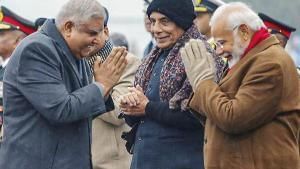 Why in News?
Why in News?
In recent years, discussions around nutrition and health in India have primarily focused on the detrimental impacts of sugar and excessive oil intake. However, an equally pressing dietary concern that requires attention is the high salt consumption prevalent among the Indian population. Despite its deep-rooted presence in Indian cuisine, excessive salt intake poses serious health risks, necessitating public health policies that address it with the same urgency as sugar and fat consumption.
Key Takeaways
- Indian adults consume 8 to 11 grams of salt daily, exceeding the WHO's recommended limit of 5 to 6 grams.
- Approximately 75% of salt intake comes from home-cooked meals, including traditional staples like pickles and papad.
- High salt intake is linked to hypertension, affecting 28.1% of Indian adults and increasing cardiovascular disease risk.
Additional Details
- Extent of the Problem: Salt is often hidden in various food products such as bread, sauces, and even sweet items, making it challenging to monitor daily intake.
- Misconceptions: Many believe that alternatives like rock salt or Himalayan salt are healthier, but all salts contain sodium, leading to similar health risks when consumed excessively.
- Public Health Initiatives: There is a need for a comprehensive approach that includes public awareness campaigns, early interventions in children, and regulatory measures to manage salt consumption effectively.
In conclusion, addressing the issue of excessive salt intake is crucial for improving public health in India. By debunking myths and reforming food systems, India can take significant steps toward reducing salt consumption. A multi-pronged strategy that combines regulation, awareness, and community involvement is essential to mitigate the rising burden of non-communicable diseases for future generations.
GS2/Polity
The Turmoil in Kathmandu, the Road Ahead for Nepal
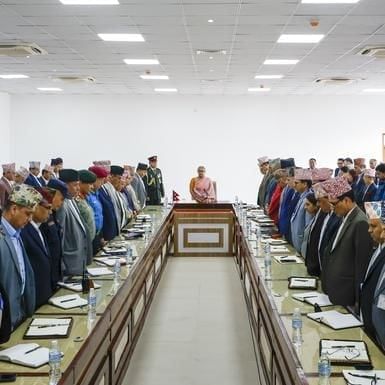 Why in News?
Why in News?
The political turmoil in Nepal following the Gen Z protests of September 2025 represents a pivotal moment in South Asia's democratic evolution. Unlike previous uprisings driven by established political parties, this movement is primarily led by the youth, expressing their discontent with corruption, elitism, and a lack of economic opportunities.
Key Takeaways
- The resignation of Prime Minister K.P. Sharma Oli and the appointment of former Chief Justice Sushila Karki as interim Prime Minister highlight the instability and resilience of Nepal's democracy.
- This unrest is part of a broader wave of political instability across South Asia, reflecting a common youth discontent but differing political contexts.
- The upcoming elections in March 2026 will be crucial in determining Nepal's political future and the effectiveness of youth-led movements.
Additional Details
- Regional Context of Turbulence: Nepal's current unrest cannot be viewed in isolation; other South Asian nations have experienced significant political upheaval, such as Myanmar's military coup and Afghanistan's fall to the Taliban. Each country's crisis, while sharing similarities in youth disillusionment, is influenced by its unique political history.
- Nepal's Distinctive Path: Since the Jan Aandolan in 1990, Nepal has struggled with political instability characterized by frequent government changes. The same political figures have maintained power, leading to widespread corruption and economic stagnation.
- Interim Government Challenges: The new interim government faces significant hurdles, including calls for constitutional amendments that could exacerbate ethnic tensions. Sushila Karki’s priorities focus on holding elections, investigating violence, and tackling corruption, yet systemic issues complicate these goals.
- Youth, Democracy, and Legitimacy: Youth unemployment exceeding 20% fosters resentment towards the political elite. The Gen Z protests have sparked a desire for new political structures, but transitioning from protests to governance remains a challenge.
- India’s Role: India has maintained a cautious approach, signaling support for the new leadership while emphasizing the importance of stability in Nepal for regional interests.
The current phase of political transition in Nepal encapsulates both potential and risk. While the Gen Z protests have disrupted the status quo, the key challenge lies in transforming public discontent into lasting institutional reforms. The upcoming elections will be a significant test for Nepal's democratic resilience; if conducted fairly, they could signify a new chapter of governance, but if undermined, they may lead to continued instability.
GS3/Science and Technology
Roadmap for India’s Fusion Power Plan
 Why in News?
Why in News?
Researchers at the Institute for Plasma Research (IPR) in Gandhinagar have unveiled a roadmap for India's fusion programme, highlighting the Steady-State Superconducting Tokamak-Bharat (SST-Bharat) as the country's inaugural fusion electricity generator.
Key Takeaways
- India's roadmap aligns with the nation's commitment to achieve Net Zero emissions by 2070.
- The project aims to transition from fusion-fission hybrids to a full fusion demonstration reactor by 2060.
- India's contributions to the ITER project showcase its role in global fusion research.
Additional Details
- ITER (International Thermonuclear Experimental Reactor): This is the largest nuclear fusion project globally, located in France, and involves collaboration among 35 nations.
- Nuclear Fusion: The process involves light atomic nuclei, such as hydrogen, merging to form a heavier nucleus, thus releasing substantial energy, akin to the reactions occurring in the Sun.
- Aim of ITER: To demonstrate safe, carbon-free fusion energy by achieving a Q value of 10, producing 500 MW output from a 50 MW input.
- India’s Contribution: India became a full partner in ITER in 2005, contributing 9% of the hardware and investing approximately ₹17,500 crore.
- Major Contributions Include:
- A cryostat, the world's largest vacuum vessel, fabricated in Gujarat.
- Superconducting magnets, cryogenic systems, RF heating systems, and diagnostics.
- Research and development on lithium-lead breeder blankets to ensure tritium self-sufficiency in fusion reactors.
The roadmap outlines a phased strategy with targets set for various timeframes:
- 2025–2035: Focus on ITER participation, validation of deuterium-tritium fueling, superconducting magnets, and plasma control.
- 2035–2060: Development of INDRA, a fusion reactor aimed at 500 MWe output with a Q value greater than 20.
- Post-2060: Plans for commercial-scale fusion plants targeting a total of 50 GW fusion capacity by 2100, helping to offset approximately 750 MT CO₂ annually.
This roadmap represents a significant advancement in India's pursuit of sustainable energy solutions, emphasizing innovation through digital twins of tokamaks and AI-assisted plasma confinement, all while maintaining a cautious approach in the global context of fusion energy developments.
About Steady-State Superconducting Tokamak-Bharat (SST-Bharat)
- Design: SST-Bharat is intended to be India's first fusion electricity generator, incorporating a fusion-fission hybrid model.
- Output: Expected to generate a total of 130 MW, with 100 MW from fission and 30 MW from fusion, achieving a Q-Value of 5.
- Cost: The project is estimated to require an investment of ₹25,000 crore.
- Features: Incorporates superconducting magnets, advanced plasma control systems, and a hybrid breeding design for fuel generation and waste reduction.
- Legacy: Builds upon the achievements of the SST-1 tokamak, which successfully maintained plasma confinement for 650 ms, with a design capacity of up to 16 minutes.
The success of India's fusion energy initiative holds the potential to revolutionize the global energy landscape by providing a sustainable, low-carbon energy source.
GS3/Environment
Follow the Rains, Not the Calendar to Fight Floods
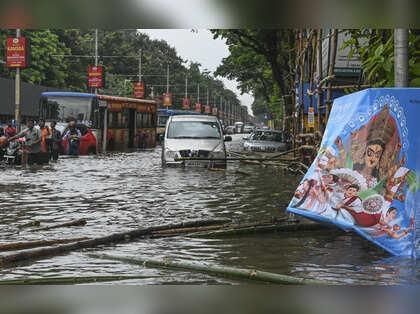 Why in News?
Why in News?
This year, northern states such as Punjab, Delhi, and Gurugram experienced severe flooding in September, extending beyond the traditional monsoon period. The unprecedented intensity and timing of rainfall have highlighted the urgent need for cities to rethink urban flood management strategies.
Key Takeaways
- Urban floods are increasingly becoming a crisis, driven by high-intensity rainfall patterns.
- Outdated urban planning and drainage systems are failing to adapt to changing climate realities.
- The economic impact of floods can reach up to ₹8,700 crore per event.
Additional Details
- Changing Rainfall Patterns: Rainfall is now occurring in shorter, more intense bursts, overwhelming traditional drainage systems. For example, Mumbai recorded 135.4 mm of rain in May, a month typically considered pre-monsoon.
- Outdated Drainage Design: Many cities still rely on data from decades ago, failing to account for modern rainfall intensity and frequency.
- Coordination Issues: Departments responsible for stormwater, sanitation, and waste management often operate in isolation, leading to ineffective flood responses.
- Proposed Solutions:
- Adoption of sub-daily rainfall analysis for better drainage planning.
- Synchronization of waste collection and drain cleaning with real-time rainfall alerts.
- Regular updates to Intensity-Duration-Frequency (IDF) curves for planning and infrastructure development.
- Creation of separate sewerage and stormwater networks to enhance efficiency.
The fight against urban floods necessitates a shift in mindset; cities must learn to follow the rain rather than rely on traditional calendars. By improving inter-departmental coordination and adapting infrastructure to current realities, urban areas can enhance their resilience to flooding.
GS3/Environment
What are ‘Planetary Boundaries’?
Why in News?
The Planetary Health Check (PHC) 2025 has issued a warning that seven out of nine planetary boundaries have been breached. This alarming report highlights the urgent need to address various human activities that are pushing Earth beyond its safe operating limits for the first time in over 11,000 years.
Key Takeaways
- The PHC report identifies seven breached planetary boundaries.
- Human activities such as fossil fuel combustion, deforestation, and unsustainable agriculture are significant contributors.
- Ocean acidification has crossed the safe zone for the first time.
Additional Details
- About Planetary Health Check (PHC): The PHC is a global scientific assessment that evaluates the health of the Earth’s systems by tracking ecological thresholds essential for maintaining habitability.
- Planetary Boundaries (PBs): This concept, introduced in 2009 by a team of scientists led by Johan Rockström, defines the safe operating space for humanity by establishing ecological thresholds that regulate Earth system stability and resilience.
- Significance: Crossing these boundaries poses a risk of irreversible environmental collapse.
Nine Planetary Boundaries
- Climate Change:
- Safe CO2 level: 350 ppm.
- Current level (2025): 423 ppm; radiative forcing at +2.97 W/m² (safe: +1.5 W/m²).
- Biosphere Integrity:
- Extinction rate: 100 E/MSY vs. safe limit of 10 E/MSY; biodiversity continues to decline.
- Land System Change:
- Global forest cover has decreased to 59% (previously 75%). All major terrestrial biomes are breached.
- Freshwater Change:
- Over 20% of global land shows significant deviations in streamflow (22.6%) and soil moisture (22%).
- Regions like the Indo-Gangetic Plain and North China basins are particularly at risk.
- Biogeochemical Flows:
- Excessive nitrogen (N) and phosphorus (P) use in agriculture is causing eutrophication and worsening dead zones in water bodies.
- Novel Entities:
- Introduction of plastics and synthetic chemicals exceeds the safe threshold, posing environmental risks.
- Ocean Acidification:
- Surface ocean acidity has increased by 30-40% since the industrial era, threatening marine life.
- Atmospheric Aerosol Loading:
- Current AOD difference is 0.063, below the safe threshold of 0.10, although it remains harmful to health.
- Stratospheric Ozone Depletion:
- Global ozone concentration is stable at 285-286 DU, continuing to recover, but new threats have emerged from rocket launches and satellite debris.
The concept of the "sixth mass extinction" often arises in discussions concerning mankind’s over-exploitation of natural resources, habitat destruction, pollution, and climate change. These factors are critical to understanding the current ecological crisis.
GS3/Science and Technology
Desert Soilification Technology
Why in News?
Researchers at the Central University of Rajasthan (CUoR) have successfully utilized desert soilification technology to cultivate wheat in the arid regions of western Rajasthan for the first time, highlighting a significant advancement in agricultural practices in challenging environments.
Key Takeaways
- Desert soilification technology transforms barren desert sand into soil-like material suitable for agriculture.
- This technology aims to combat desertification and enhance agricultural productivity in arid zones.
Additional Details
- Overview: This innovative biotechnological method employs bioformulations and polymers to bind loose sand particles, improving soil texture and enabling efficient water retention.
- How it Works:
- Polymer-based Bioformulation: Natural polymers and microbial formulations are applied to the desert sand to enhance its properties.
- Cross-Linking of Sand Particles: Bio-polymers create a structural network, binding sand grains together, resulting in a soil-like matrix.
- Water Retention: The resulting structure retains water, significantly reducing irrigation needs and preventing rapid water loss.
- Microbial Boost: Beneficial microbes are introduced to stimulate plant growth and improve soil fertility.
- Key Features:
- Sand-to-Soil Conversion: Creates porosity and root-holding capacity through cross-linking.
- Water Retention Efficiency: Enhances moisture retention, reducing irrigation requirements by 30-40%.
- Crop Versatility: Successfully tested with various crops including wheat, bajra, and chickpea, with plans to expand to other crops.
- Low Input Agriculture: Requires fewer irrigation cycles compared to traditional farming methods.
- Climate Resilience: Provides a sustainable model for food production in arid and desertified regions.
- Scalability: Potential for replication in other arid ecosystems such as the Middle East and Africa.
This technology represents a promising solution for enhancing agricultural viability in challenging terrains, offering a sustainable approach to food production and combating desertification.
UPSC 2023
Which one of the following best describes the concept of ‘Small Farmer Large Field’?
- (a) Resettling war-displaced people on shared cultivable land
- (b) Marginal farmers group to coordinate farm operations *
- (c) Marginal farmers lease land collectively to a corporate
- (d) A company funds and guides farmers to grow required crops
GS2/International Relations
U.K., Australia and Canada Recognise Palestine State in Seismic Shift
Why in News?
On September 22, 2025, Britain, Australia, and Canada formally recognised Palestine as a sovereign state. This significant development marks a pivotal shift in Western foreign policy, especially among G-7 nations, and follows nearly two years of conflict in Gaza that escalated after Hamas's attack on October 7, 2023. While this move is celebrated by Palestinians, Israeli Prime Minister Benjamin Netanyahu condemned it as an "absurd reward for terrorism."
Key Takeaways
- This recognition represents the first instance of G-7 nations officially acknowledging Palestine, diverging from the long-standing Western support for Israel.
- It highlights a stark change in policy, as Western nations had previously deferred recognition pending a negotiated two-state solution.
- The decision is influenced by ongoing violence in Gaza and a perceived urgency for peace.
- The U.K. carries a "special responsibility" due to its historical role in the region, particularly the 1917 Balfour Declaration.
Additional Details
- Reviving Peace Hopes: Leaders, including U.K. Deputy PM Keir Starmer, view this recognition as a means to reinvigorate the two-state solution discussions.
- International Pressure: Increased calls for accountability regarding humanitarian issues in Gaza have prompted action from these governments.
- Alignment with Europe: Portugal's simultaneous announcement of recognition, along with expected support from France, reflects a united European front.
- Israel's Reaction: Netanyahu has expressed strong opposition, claiming that recognition undermines Israel's existence and framing it as a reward for terrorism.
- Historical Context: The legacy of the Balfour Declaration and ongoing stalemates in peace negotiations impact the current dynamics.
- Geopolitical Implications: This shift could create divisions between U.S. policies and those of its allies, influence developing nations' views on justice and decolonization, and affect regional power balances.
The recognition of Palestine by the U.K., Australia, and Canada transcends mere symbolism; it may initiate a wave of similar acknowledgments from other Western nations. While it renews hopes for a two-state resolution, it also risks exacerbating tensions with Israel and the United States.
|
297 docs|147 tests
|
















